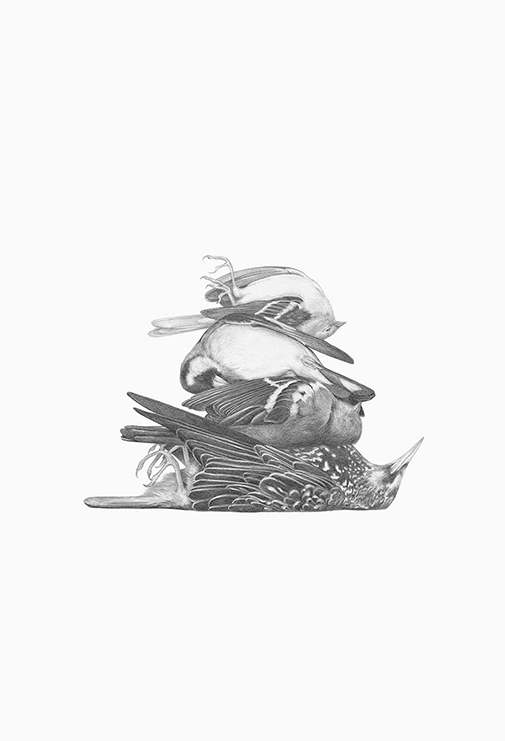- Vol. 01
- Chapter 05

Flight Patterns
The books of birds are feather-full today, and I pencil sketch each wing and breast and beak at my desk in the library, the one with the round lamp I always touch one-two-three times. I make sure each curve is exactly right, the shading deep enough for the dips and hollows at breastbones and throats and in the tricky folds of talon-skin, the slightest smudge at the joint between wing and body to give contour and depth: the illusion of movement – a wing, spreading; the tremor of a small, fluffed body; a breath between wind and sky before the open air.
The librarian says my sketches look like real, live birds, but they don’t. That’s illusion, too. It all is. Drawing, birds, maybe even life. But I am precise. I feel like I have to document each small detail, as if I’m transferring the birds molecule by molecule from the books to my notebooks, storing them away, making carbon copies for the future. People ask me why birds, but I don’t really have an answer. I’ve never wanted to fly, so it isn’t that, though people always assume it is. I just feel it’s important somehow; they’re important. Perhaps once I’ve sketched enough I’ll figure out why. I store their names away, too: chaffinch, bunting, whinchat, curlew, sandpiper, guillemot, thrush, shrike, stonechat… though the names are of less interest to me. It’s the shape of them that matters. The way they move silently behind my eyelids when I sleep. Fluttering and swooping, painting flight patterns with their wingtips that I trace in the morning with my fingers along the wallpaper.
Flight Patterns
I wonder sometimes whether the books’ illustrators used real birds to draw from: if they were alive or dead, out in the wild or in little plastic cages in brightly lit labs. I wonder, too, whether the birds are still out there somewhere in a field, opening their throats to the morning, or if their babies or grand-babies are nestled in a hedgerow, chirruping softly as the spring buds start to burst into blossom, not knowing that somewhere in a small corner of a library they’ve been printed flat and left with a chunk of text-description ready for the time when they disappear from our fields and meadows and forests.
I touch the lamp again, one-two-three times. Just in case. Just for luck.
